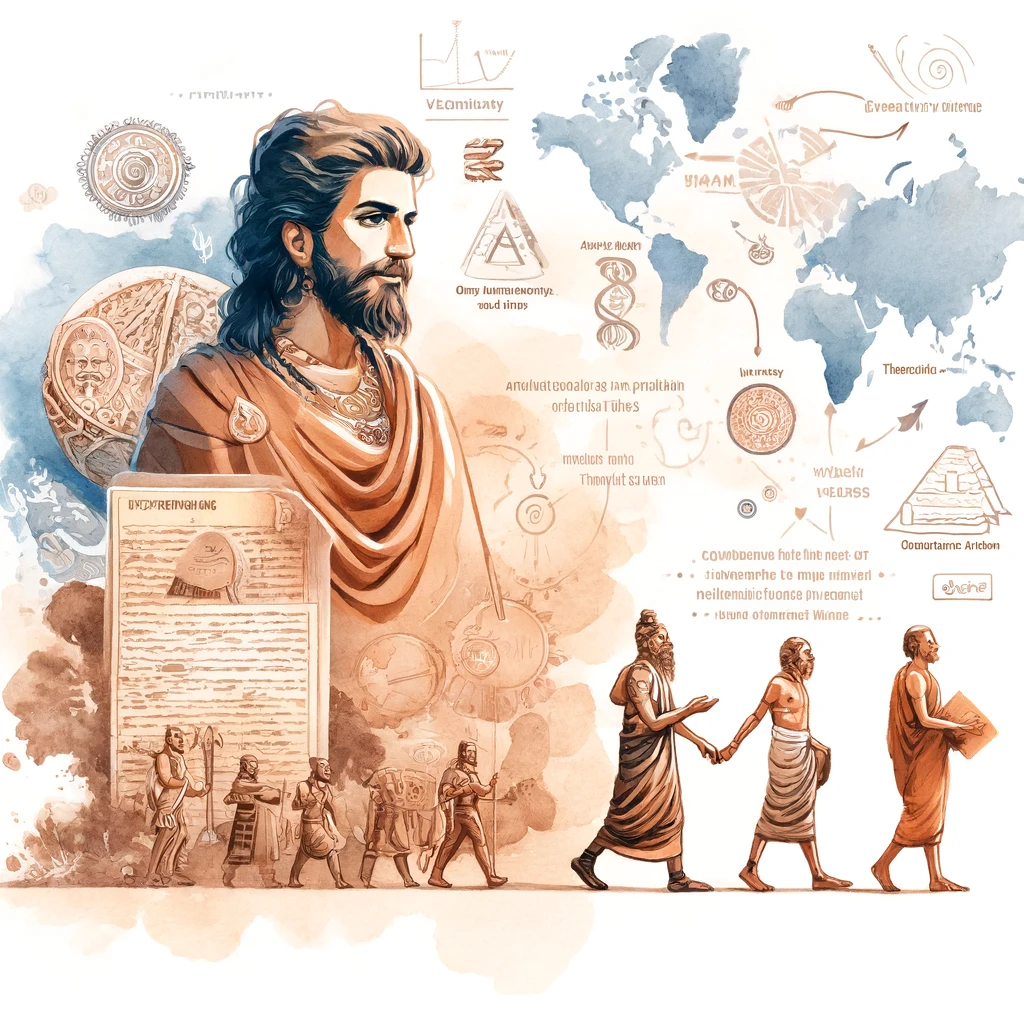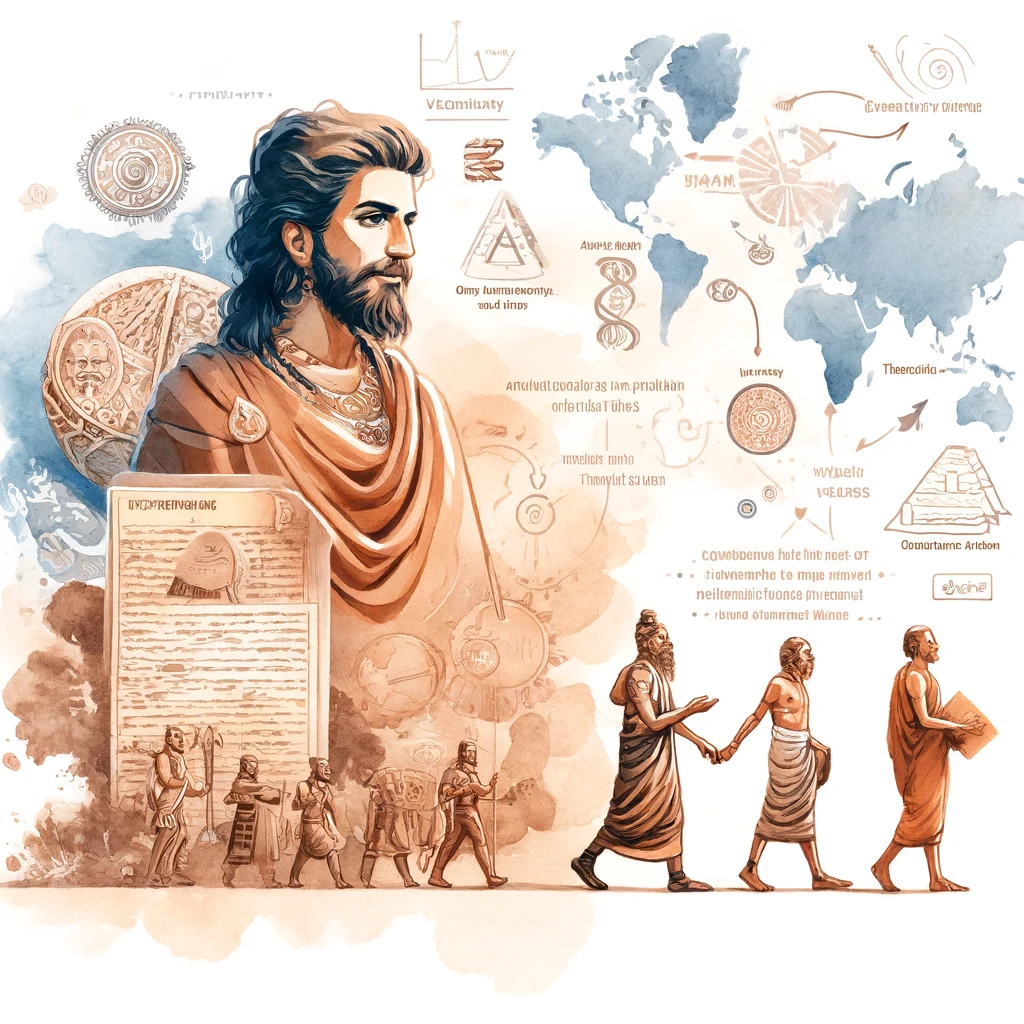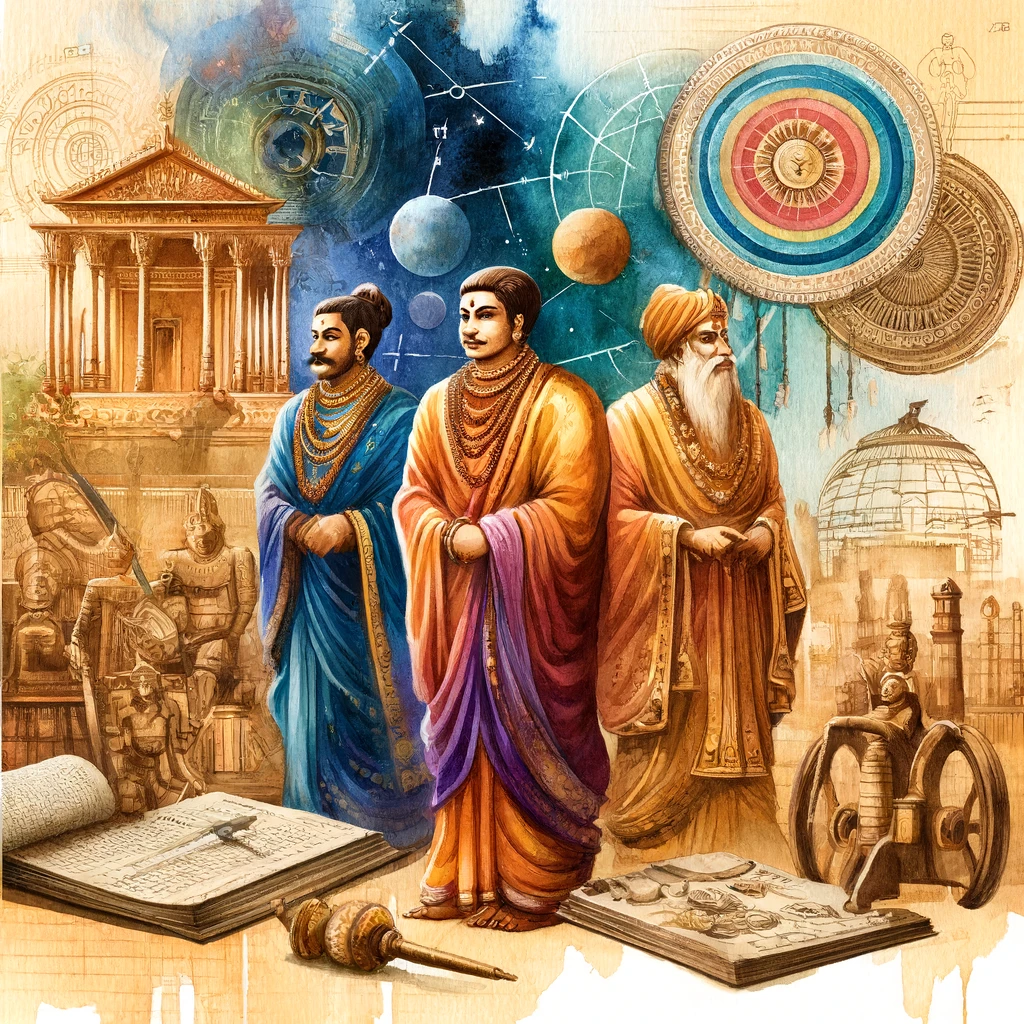The Vedic Age, spanning approximately from 1500 BCE to 500 BCE, represents a formative period in the history of ancient India. During this era, the foundation for many aspects of Indian culture, society, and religion was established. The Vedic texts, which include the four Vedas (Rigveda, Samaveda, Yajurveda, and Atharvaveda) and their associated literature, provide extensive insights into the social structure, the role of women, and the religious practices and rituals of the time.

Social Structure and Varna System
The Vedic society was initially a simple, tribal, and pastoral one, which gradually evolved into a more complex agrarian society with a well-defined social hierarchy.
Tribal Organization
- Early Vedic society was organized into tribes (janas) led by a chieftain (raja). The raja was primarily a war leader and protector of the tribe, with limited ritualistic and administrative duties.
- The basic social unit was the family (kula), which was patriarchal. Extended families formed clans (vish), and several clans constituted a tribe.
Varna System
The concept of varna, or social classes, emerged during the later Vedic period. The society was divided into four main varnas:
- Brahmins: The priestly class responsible for performing religious rituals and preserving sacred knowledge. They held the highest status in the social hierarchy.
- Kshatriyas: The warrior and ruling class, including kings and soldiers. Their primary duties were to protect and govern the people.
- Vaishyas: The merchant and agricultural class engaged in trade, commerce, and farming. They were responsible for the economic well-being of society.
- Shudras: The laboring class, tasked with serving the other three varnas. They performed various menial and artisanal jobs.
Role of Women
Women in Vedic society enjoyed a significant degree of respect and freedom, particularly during the early Vedic period. They played vital roles in both the domestic and public spheres.
Domestic Life
- Women were central to the family unit and participated in religious rituals alongside men. They were responsible for managing the household, including food preparation, weaving, and nurturing children.
- The education of women was valued, and they were often taught to read and recite Vedic hymns. Moreover, the Upanayana (sacred thread ceremony) was sometimes performed for girls, indicating their initiation into education and religious practices.
Public Life
- Women had the right to choose their husbands through a ceremony called swayamvara. Moreover, they could participate in intellectual and philosophical discussions, as evidenced by the presence of learned women like Gargi and Maitreyi in Vedic literature.
- Although polygamy existed, monogamy was the norm. Widows had the right to remarry, and the practice of sati (self-immolation) was absent during the Vedic age.
Restrictions
Over time, the status of women began to decline, especially in the later Vedic period. Practices such as child marriage and increased domestic confinement started to emerge, marking the beginning of a more patriarchal society.
Vedic Religion and Rituals
The religious life of the Vedic people was deeply intertwined with their daily existence, and their rituals and beliefs were central to maintaining cosmic order (Rita).
Pantheon of Deities
The Vedic religion was polytheistic, worshiping a multitude of gods and goddesses. Key deities include:
- Indra: The king of gods and god of rain and thunderstorms, is often depicted as a warrior.
- Agni: The fire god and mediator between humans and gods, crucial for all sacrificial rituals.
- Soma: The deity associated with the sacred Soma plant, which was used to prepare a ritual drink.
- Varuna: The god of cosmic order and moral law.
- Surya: The sun god, symbolizing light and life.
Rituals
- Sacrifices (yajnas) were the most important religious rituals in the Vedic religion. These were conducted by priests (Brahmins) and involved offerings of food, ghee, and Soma to the gods in the sacred fire (Agni).
- The rituals ranged from simple domestic offerings to elaborate public ceremonies, such as the Ashvamedha (horse sacrifice) and Rajasuya (royal consecration).
- Ritual purity and precise recitation of hymns were considered essential for the efficacy of the sacrifices.
Philosophical Concepts
- The Vedic texts introduced several philosophical ideas that later became central to Hinduism, such as the concepts of dharma (duty/righteousness), karma (action and its consequences), and moksha (liberation from the cycle of birth and rebirth).
- In addition, the Upanishads, composed during the later Vedic period, focused on meditative and philosophical aspects, emphasizing the unity of the individual soul (Atman) with the universal soul (Brahman).
Conclusion
The Vedic Age laid the foundational cultural and social structures that significantly influenced subsequent Indian civilizations. The varna system, though initially flexible, became a defining feature of Indian society. The role of women, although initially prominent, saw changes over time. Vedic religion and rituals established the religious framework that evolved into classical Hinduism. Moreover, for UPSC aspirants, understanding these aspects of Vedic society is crucial for grasping the historical roots of many contemporary Indian social and cultural practices.


